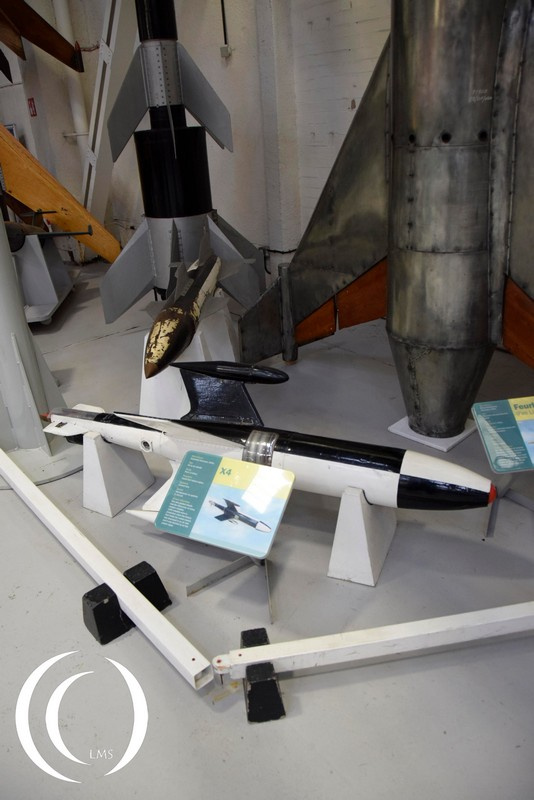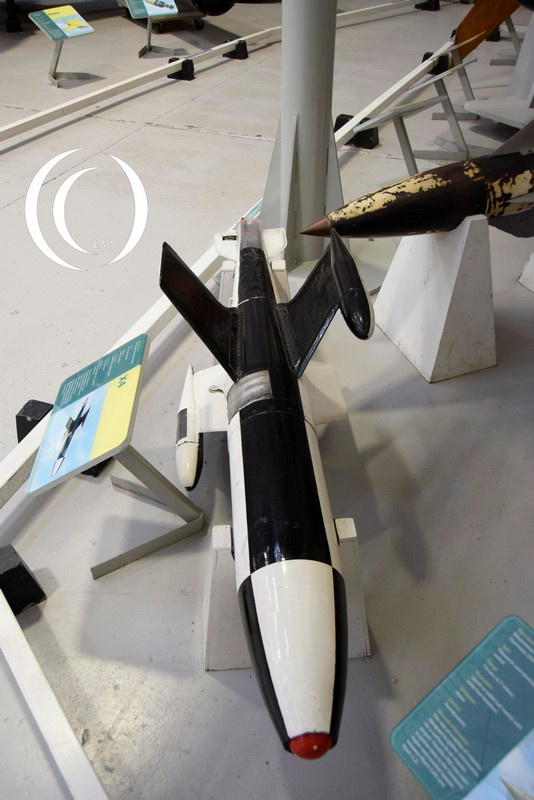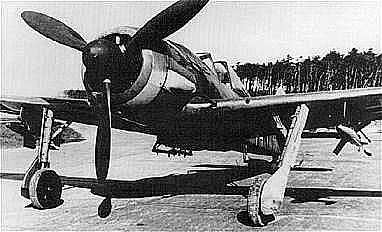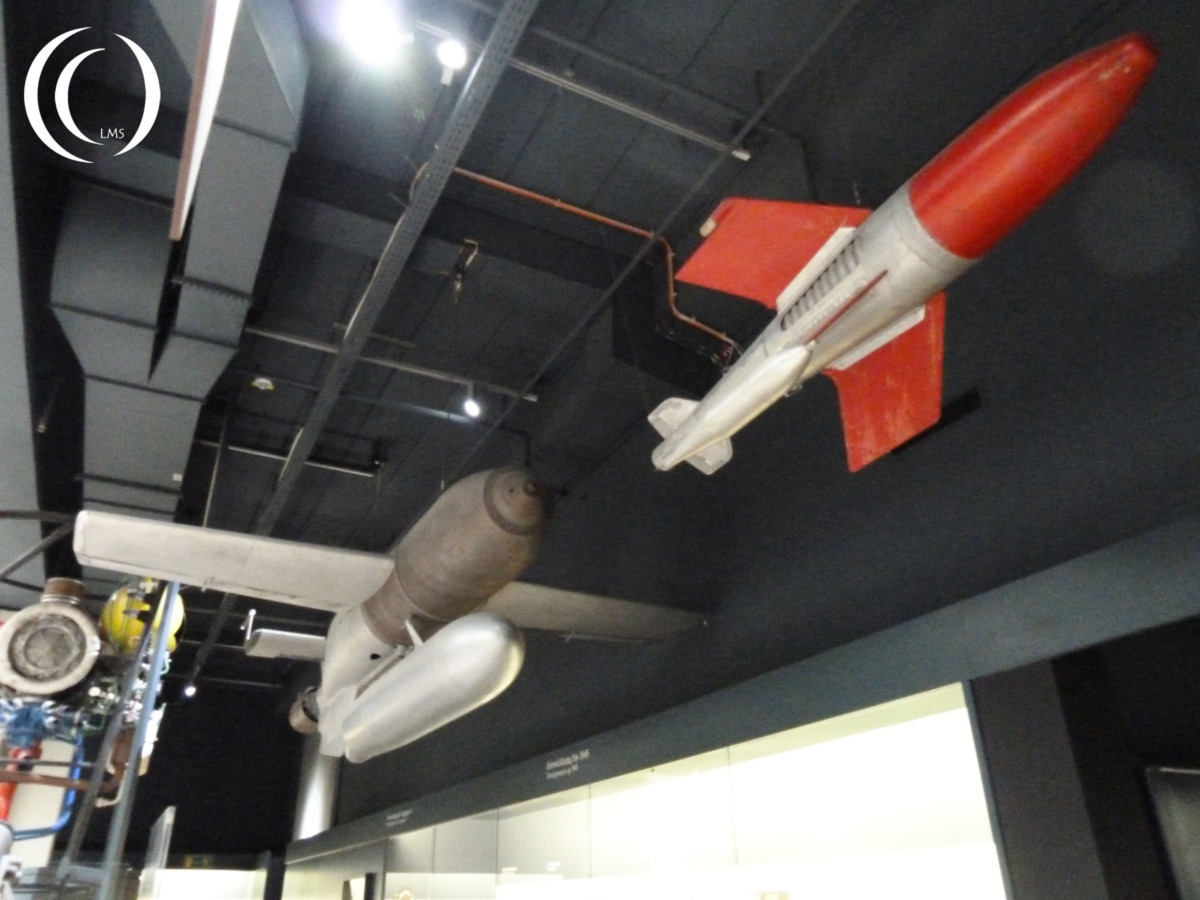During the development of the Air to Surface glide bomb Ruhrstahl X-1 or Fritz X, Dr Max Kramer started working on an Air-to-Air missile in 1943. The idea was to do a lot of damage to Allied bomber formations without loss of Luftwaffe pilots. The Air-to-Air missiles should be fired from a safe range, out of the effective range of the Allied machine guns in the bombers. They chose a wire guided setup to rule out the radio jamming equipment of the Allies.
As with other guided missiles or glide bombs the Luftwaffe used a manual command to line of sight (MCLOS) system. A FuG 510 “Düsseldorf” to FuG 238 “Detmold” system was used and provided a joystick control in the cockpit.



At first the Ruhrstahl X-4 was used with single seat fighters like the Focke-Wulf Fw 190, but the results were not promising for the pilot had to steer its plane and control the wire guided rocket at the same time. The Luftwaffe switched to multi seat planes like the Junker Ju 88 to divide the tasks between a pilot and gunner. The single seat fighters were underwing equipped with the unguided R4m Orkan missiles.
The Ruhrstahl X-4 had a few other designations like Ruhrstahl Ru 344 X-4 or Ruhrstahl-Kramer RK 344 or Kramer X4. It had a length of 201 centimeters, a diameter of 22 cm, a wingspan of 73 cm and weighed about 60 kilograms. With its speed of almost 900 km/h it had an effective range of 3500 to 5000 meters. It used a BMW 109-548 liquid rocket engine or a Schmidding 109-603 solid (powder) rocket engine. It carried a 20 kg warhead.




The liquid used in the BMW engines was very aggressive and dissolved metals over time causing stability problems on the rocket, therefore a solid fueled engine was provided by Schmidding. There were three types of fuses to be used. An impact fuse, an automatic self-destruct mechanism or a fuse with an acoustic sensor on the Ruhrstahl X-4. With the acoustic fuse the missile came into a predesignated distance and then the sound of an aircraft’s engine would let it explode. The acoustic fuse was named Kranich like the bird.



During one of the test flights of a V-2 Rocket on the test facility at Peenemünde Hermann Göring attended test number 260. He seems to have said this line while Walter Dornberger, leader of Nazi Germany’s V-2 rocket program, and Dr. Max Kramer, scientist at Ruhrstahl AG steel and responsible for the construction of the Fritz X and the Ruhrstahl X-4 were present at the Prüfstand VI (test site number 6).


Hermann Göring at the launch: “Why is it that this fellow (Walter Dornberger) manages all right and you (developer Dr. Kramer of Ruhrstahl) don’t? Let him show you how it ought to be done.”
Ruhstahl had built 1300 X-4 missiles by 1945 but the destruction of the BMW rocket engine facility and the end of the Second World War prevented further production and combat use of the Ruhrstahl X-4.


The colors of the missiles in our photographs do not seem likely to fit wartimes. It is more likely that the missiles had a camouflage design or an inconspicuous color.